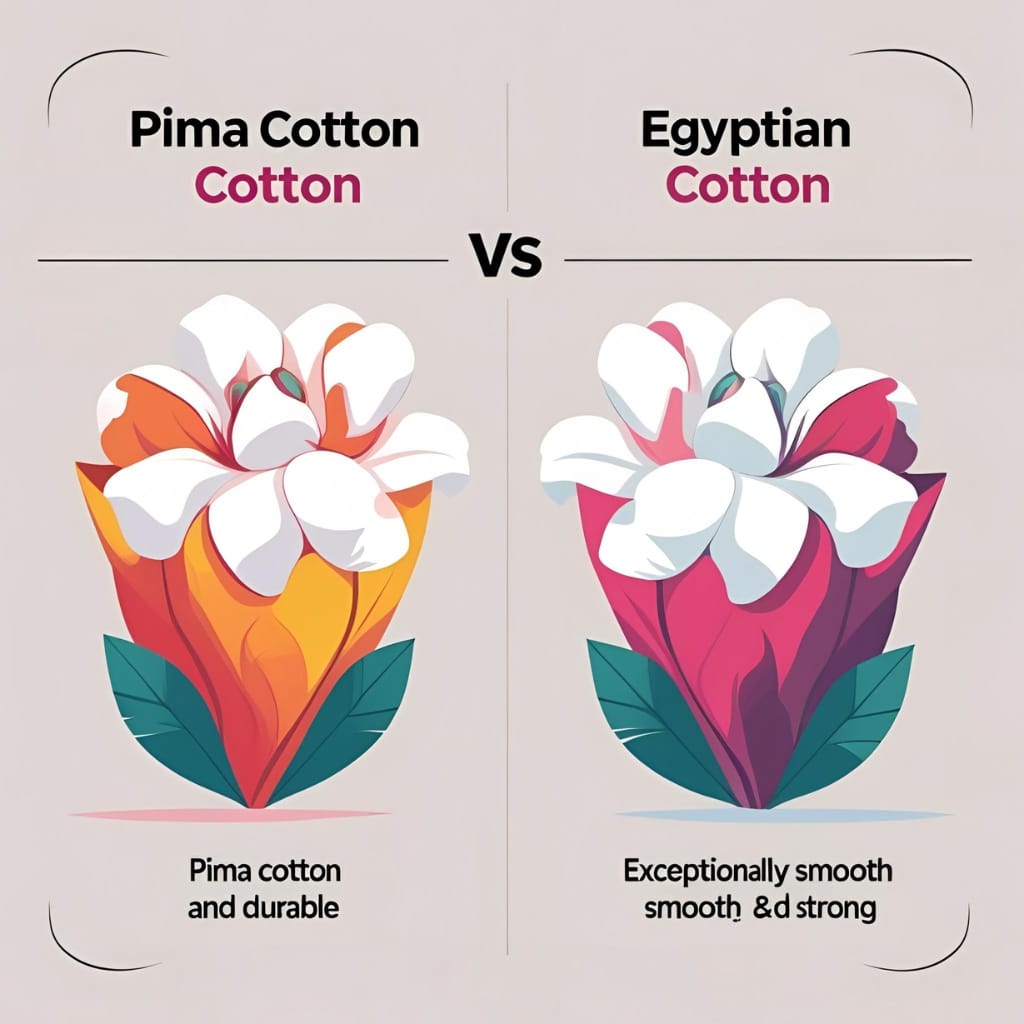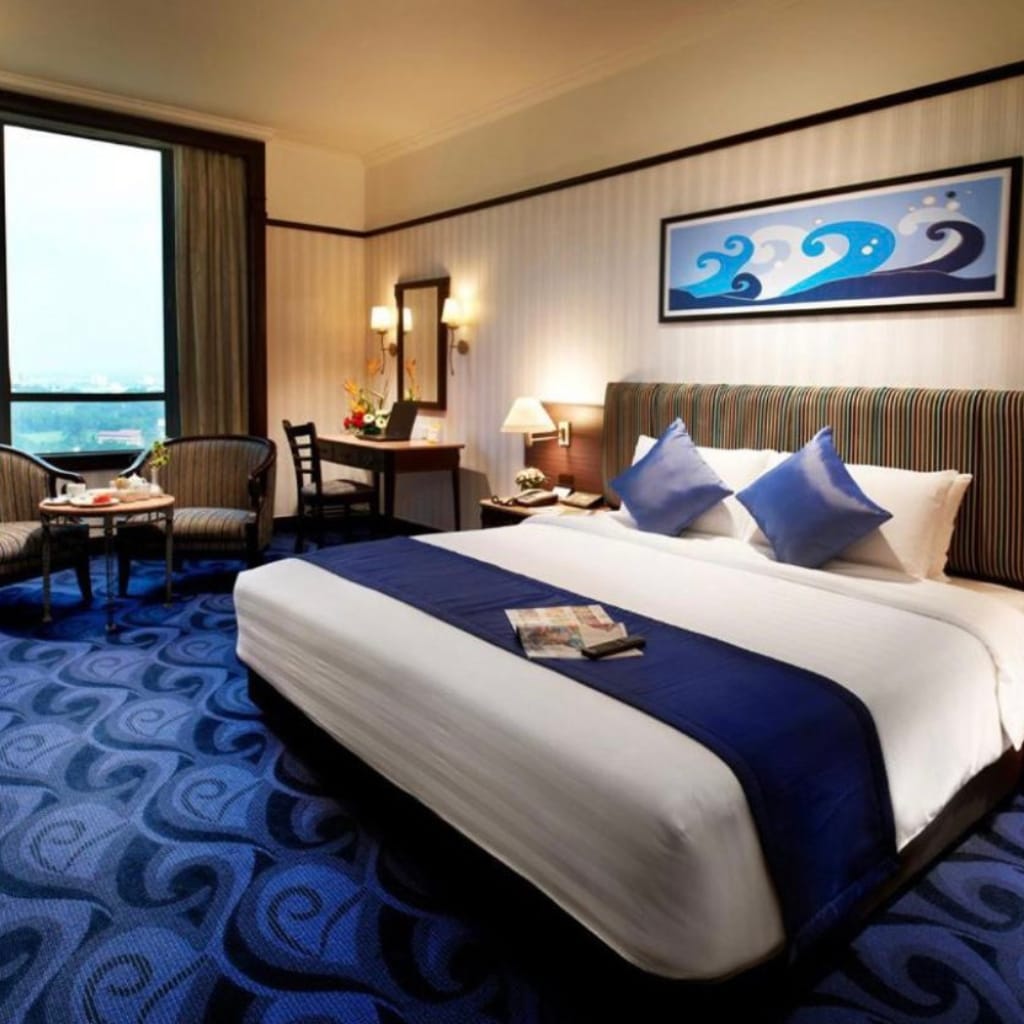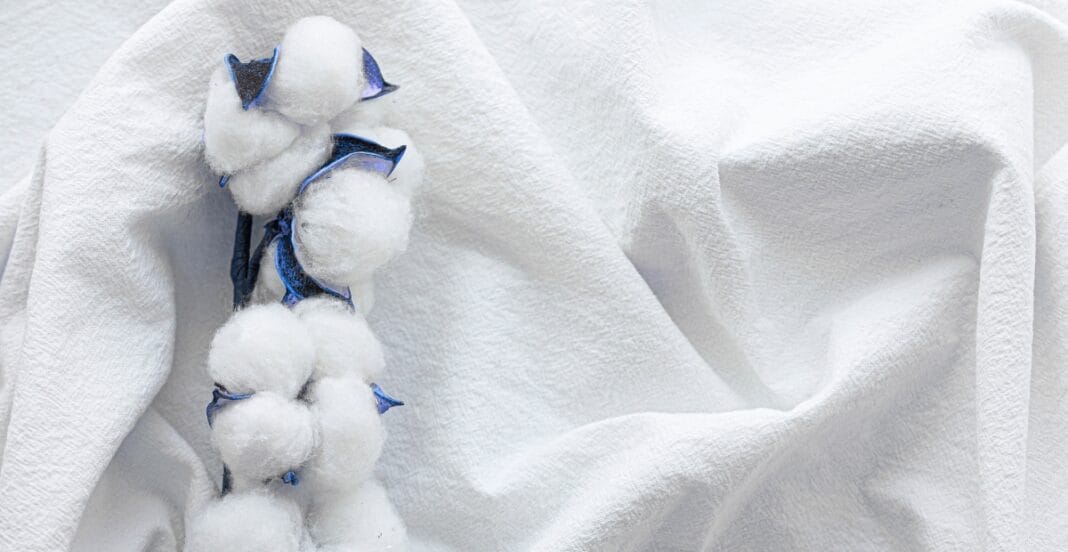While browsing for clothes and bedding, one fabric stands out above the rest. Long-staple cotton fabric is likely the most smooth, and durable fabric out there, and it’s likely you have come into contact with it at some point in your life. From comforters to shirts, long-stable cotton can be found almost anywhere, so it’s no surprise that you might be sleeping on it. While most of the people don’t know the science behind why it looks better, feels smoother, and lasts longer, it is clear that this fabric is one of the best out there.
The intention of this article is to explain the journey long-staple cotton fabric goes through, along with its benefits of use and how it can revolutionize the textile industry. This guide fulfills the reader’s need regardless if they are a lover of fast fashion, a sustainable buyer, or just someone desperately looking for quality bedding without annoying seams.
Table of contents
- The Origin of Long-Staple Cotton
- What are the procedures for growing Long Staple Cotton?
- Why is it Long “Staple”?
- Comparing Short-Staple and Long-Staple Cotton
- Pima Cotton vs. Egyptian Cotton
- How Long-Staple Cotton is Processed into Fabric
- Along the Benefits of Long Staple Cotton Fabric
- Why it is More Expensive
- Is It Worth the Investment?
- How Sleep is Enhanced by Long-Staple Cotton
- Benefits of Long-Staple Cotton on Skin
- Environmental Impact
- Sustainability and Fashion
- Durability and Longevity
- Most Important Applications of Long-Staple Cotton
- Maintenance of Cotton Fabric
- Pervasive False Beliefs
- How To Identify The Authentic Long-Staple Cotton
- Is Organic Better?
- When it Comes to Delicate Skin
- This is What Lies Beneath the Fabric
- Long-Staple Cotton for Baby Products
- Long-Staple Cotton in Luxury Hotels
- Is It Good for All Seasons?
- Is Dyeing It Simple?
- Fast Fashion & Long-Staple Cotton
- Conclusion
- FAQs
The Origin of Long-Staple Cotton
The story behind long-staple cotton is as rich as the fabric itself. Long-stable cotton can be traced back to the warm US southwest as well as sun filled ayptian fields, specifically in regions with harsh sun exposure. It’s cultivation starts from ancient Egypt, where cotton was cultivated as a princely apparel, which Americans in later years started improving by changing strains. Hence, the name Pima cotton after the local native ethnic group known as the Pima was given for what is now America’s Pima cotton region.
As with many of today’s luxurious textiles, they evolved from some basic and simple forms. Multi-century refinement has helped growers perfect not only the fiber, but also the process that goes along with it.

What are the procedures for growing Long Staple Cotton?
Farmers in regions such as Peru, the Southwestern United States, and Egypt must possess an environment consisting of warm weather, rich soil, and long growing seasons.
Long-staple cotton is not fast farming. It requires time, care, and patience. Harvesting requires specific detail to minimize the use of harsh chemicals that damage the fiber. Most of the processes are still traditional, relying on hand-picking techniques.
Why is it Long “Staple”?
The term ‘long-staple’ indicates the length a piece of cotton fiber has. Long staple cotton “fibers” exceeds 1.125 inches, which is considered to be short staple cotton, and at times can reach more than 1.5 inches.
That added length makes a worlds worth of difference as it allows the fibers to be spun into finer and smoother and stronger threads. Which makes long-staple cotton silky and pill resistant. In other words, lesser fiber ends reduces fraying and breakage chances.
Comparing Short-Staple and Long-Staple Cotton
Let’s make it uncomplicated.
| Feature | Short-Staple Cotton | Long-Staple Cotton |
|---|---|---|
| Fiber Length | Short (< 1.125”) | Long (1.25”–2”) |
| Feel | Coarser | Softer and smoother |
| Durability | Moderate | High |
| Pilling | Common | Rare |
| Price | Lower | Higher |
The trend is clear when there is more staple.
Pima Cotton vs. Egyptian Cotton
Both Pima and Egyptian are luxurious types of long-staple cotton. The two are undeniably exquisite, but they do have some differences.
Egyptian cotton is grown in Nile River Valley, where the rich soil nourishes extra-fine fibers and it’s also often handpicked, protecting the fiber.
Mostly grown in the US, Pima cotton is of machine-harvested quality. Regardless of the differences in growing region, both types deliver long-lasting quality.

How Long-Staple Cotton is Processed into Fabric
The cotton journey starts in the field and ends up in closets. Once picked, cotton goes through ginning which removes seeds and other unwanted material. Combing comes next aligns the strands into properly organized strands.
Next comes spinning. Longer fibers will yield a tighter yarn with less fraying. These yarns serve as the foundation of smooth, rich fabrics. Whether it is a dress shirt or a pillow case, the difference is distinct.
Along the Benefits of Long Staple Cotton Fabric
Why do people embrace it? Here is a quick list:
- Soft as a cloud: It’s gentle right from the first day and only gets better with washes.
- Lasts longer: Fraying and tearing are minimized.
- Better for skin: Naturally hypoallergenic and breathable.
- Great for temperature control: Provides coziness in winter while keeping you cool in summer.
- Resistant to pilling: Longer lasting new appearance.
Why it is More Expensive
Cotton fabric comes with a higher price tag which raises eyebrows. However, long-staple cotton is not only a luxury, but also offers longevity. It is harvested at a slower pace through more delicate processes. Additionally, advanced machinery or skillful hands are essential to the spinning and weaving processes.
Simply put, the comfort comes at a cost, as no fabric performs like this. While garments made from short-staple cotton degrade faster, long-staple cotton continues to shine, wear after wear, and wash after wash.
Is It Worth the Investment?
Yes, absolutely. You’ve got to consider cost-per-wear. A \$40 shirt woven from short-staple cotton will likely last only one year, while a \$70 long-staple cotton shirt will tend to retain its shape and comfort for five years or more. The math checks out.
Better fabric also saves you time. No more itchy seams, no more sandpaper-feeling sheets.
How Sleep is Enhanced by Long-Staple Cotton
It really is true that your bedsheets can affect your sleep quality. Long-staple cotton is breathable, does not trap heat easily, and has the ability to wick moisture naturally. Hence, you wake up feeling refreshed, and not feeling sweaty.
If you’re anyone who suffers from skin irritations or allergies, this fabric can be of help. The purity and breathability of this fabric make it a good option, without triggering irritation, and consequently, ensuring a more restful sleep.

Benefits of Long-Staple Cotton on Skin
The skin is the largest organ of the human body, and in turn, requires the utmost care. It does not get better than long-staple cotton, not only is it soft to the touch, but is gentle on the skin.
As the fibers used are smoother and the percentage of protruding ends is much lower than that of traditional cotton, skin does not snag, but glides across the surface. This minimizes redness, rashes, and even acne for some people.
Environmental Impact
Another reason to show concern? Sustainability . The long-staple cotton farms frequently observe the strcteriest practices. Most have lower water usage, less harmful pesticides, and better social labor models.
Even better, the fabric lasts longer. Therefore, lesser garments in landfills. It supports slow fashion and reduces waste, which is something we all should be aspiring for.
Sustainability and Fashion
Resisting thinning, long staple options do not tear, or stretch out. In addition to that, the more you wash it the better it feels. Unlike many other fabrics, this one improves with age.
Long-staple cotton makes for a sleek fashion textile. It looks luxurious while feeling unbelievably cozy.
Fabrics like wool knit are soft to touch and drape well, resists wrinkles more lower grade cotton, and outlasts dyes. This assures rich deep colors that do not fade and endure several washes.
Durability and Longevity
This fabric has secured its place in designers list, ranging from tailored shirts to high-end summer dressers. These are used religously by brands like Ralph Lauren, Calvin Klein, and Eileen Fisher.
The primary focus is the fashion not about the looks it is how something feels and performs on long terms.
Most Important Applications of Long-Staple Cotton
Here is where it works the best:
- Beddings: Pillowcases, duvet covers, and sheets
- Apparel: Dress shirts, t-shirts, and undergarments
- Children essentials: Onesies and swaddles
- Luxury robes and loungewear
- Bath and hand towels and bath linens
Really, any wearable item of clothing that comes into contact with your skin on a regular basis undergoes this enhancement.
Maintenance of Cotton Fabric
Want to increase it’s durability? Try these:
- Gentle wash cycle in cold water to preserve the fibers
- Detergents Avoid harsh ones; stick to mild natural options
- No dryer or heat, if used make it at the lowest setting
- For shirts and clothes iron inside out
Helps the fabric maintain strength and vibrant color.
Pervasive False Beliefs
Let’s clarify what’s false.
- “All cotton is identical” No way that is correct.
- *“It’s too fancy for daily use” Shocking for some people, it’s used routinely, and many have come to appreciate the change.
- “It weakens easily” With the right maintenance, it stands strong.
- “Pima and Egyptian is just marketing chatter” Actual fiber varieties do exist with these names, and they come with stringent standards.
How To Identify The Authentic Long-Staple Cotton
Here’s how to steer clear from fakes:
- Touch it: Soft but dense and smooth.
- Search for certifications: Supima®, Giza, and so on.
- Purchase from reputable brands.
- Refrain from using “Egyptian cotton” without affirmation – it could just be another tag.
Is Organic Better?
Not always, but in most cases. Organic long-staple cotton entails fewer chemicals in use and better public relations.
However, non-organic cotton can be good if processed in a reasonable manner. The main thing is brand openness.
When it Comes to Delicate Skin
With eczema, psoriasis, or other acne, this could change the game for you. Its soft nature means less friction and irritation.
Long staple cotton is often recommended by dermatologists when it comes to pillowcases that seat close to the skin as well as the clothing.
This is What Lies Beneath the Fabric
Long-staple fibers look more uniform and aligned under a microscope. This increases the amount of tightening that can be done on weaving, color absorption, and weak-spots.
This is not marketing but pure physics.
Long-Staple Cotton for Baby Products
A baby’s skin is delicate, and using long-staple cotton for swaddles and clothes helps them sleep better without the risk of diaper rashes.
It’s non-allergenic, non-poisonous, and wonderfully soft. Every baby is entitled to that.
| Feature | Long-Staple Cotton | Linen | Bamboo |
|---|---|---|---|
| Softness | Very High | Medium | High |
| Durability | High | Very High | Medium |
| Cost | Medium-High | High | Medium |
| Eco-Friendly | Yes | Yes | Yes |
Long-Staple Cotton in Luxury Hotels
Have you ever taken note of how luxurious hotel sheets feel? Most luxury resorts use long-staple cotton sheets with 300 to 600 thread counts and offer that cool crisp feel that epitomizes luxury.

Is It Good for All Seasons?
Definitely. It stays cool in summer and retains heat in winter. It is an all-season product due to its ability to regulate temperature.
Is Dyeing It Simple?
Sure it is. Long-staple cotton retains dye which produces bright and beautiful colors that last for a long time. Even after many washes, it remains vibrant.
Fast Fashion & Long-Staple Cotton
It’s much less common due to the higher cost, but that is exactly the point. Long-staple cotton does not succumb to fashion fads. It encourages mindful and eco-friendly consumption.
Conclusion
We live in an increasingly hectic and inexpensive world. Long-staple cotton fabric serves as a reminder that we should value the things which are made well, and which withstand the test of time.
It is supple yet strong. It is inflexible yet soft. When you try it, there is a good chance you will not turn back.
FAQs
Yes, it’s softer, stronger, and longer-lasting than short-staple varieties.
Not if you follow care instructions—cold water and low heat.
Absolutely. It lasts longer and feels better, making it a smart investment.


